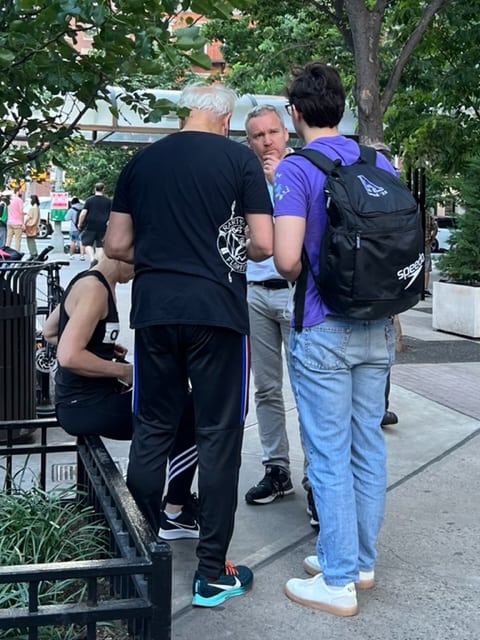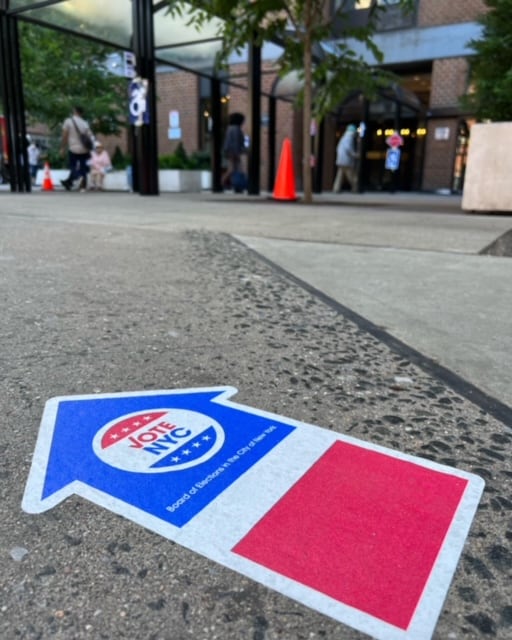We are currently on the road in the U.S. visiting New York as the first stop. The agenda is packed with meetings with our partners in the Mobile Voting Project consortium including Tusk Philanthropies, Open Source Election Technology (OSET) and others.
Last week, the first of two major scheduled primary elections took place in New York and we used this opportunity to speak with voters, candidates, election officials, campaigners and also people who had chosen not to vote on election day.
In the U.S., a primary election is an election used either to narrow the field of candidates for a given elective office or to determine the nominees for political parties in advance of a general election. Last week’s election in New York included several primaries for statewide office, including for governor and lieutenant governor.

Low turnout rate at NYC primaries
Learning more about this election provided us with valuable insight about the broader context in which our voting system must be able to operate, but it also served as a reminder of the burning platform and purpose that lies behind the Mobile Voting Project.
On election day, the 28th of June, turnout was anemic across New York city according to statistics from the Board of Elections. Just 87,000 of the 3.6 million registered Democrats and Republicans cast ballots during the nine days of early voting that preceded the first primary, an extremely low turnout rate of 2.4%.
The Mobile Voting Project is all about fixing this issue by adding mobile voting as an option to increase participation by making voting more convenient without sacrificing voting verifiability. The solution that we are currently developing works like a digital version of paper absentee voting. Instead of receiving a ballot by mail, eligible voters can access their ballot through a smartphone, tablet, or computer.
Adding mobile voting as an option
When you receive your vote, you must (just as you do when you vote in person) provide some identifying information, such as your name, date of birth, and ID number. That information is matched to your registration record to determine your eligibility to vote in the election and retrieve your digital ballot.
You can then mark your ballot on your device. For voters with disabilities, you can use your own assistive technology to read and mark your ballot. When finished voting, you must follow other requirements for mail or absentee voting, including signing an affidavit attesting to your identity and providing a photo of an acceptable ID, where required.
You will have the option to return your ballot packet either physically by printing it at home or digitally from your device. With digital ballot return, the ballot packet is encrypted and transmitted to a digital ballot box where it is stored under a double seal until it is time to print the ballot for tabulation. All digital ballots will be printed onto paper ballots and are scanned and tabulated with all other absentee ballots cast in the election.
In Assembly Voting, we believe mobile voting is the next step to make voting easier for Americans including primaries in New York, and we look forward to continuing the ongoing development of a solution to serve this purpose.



